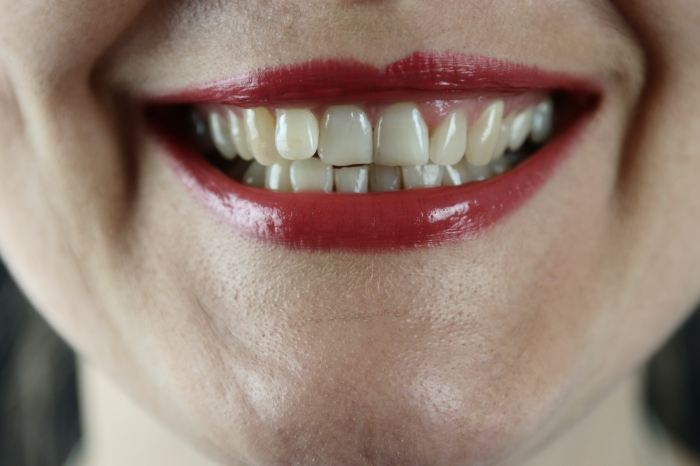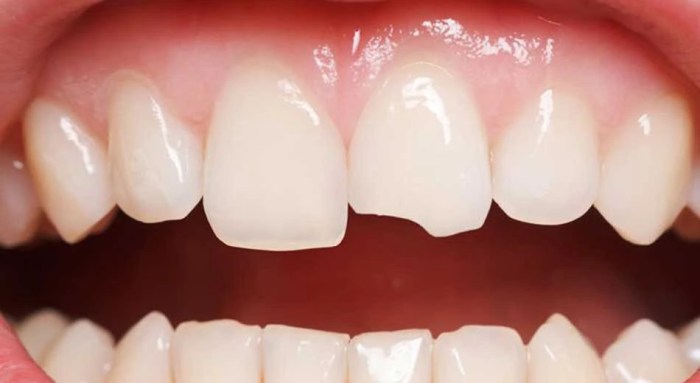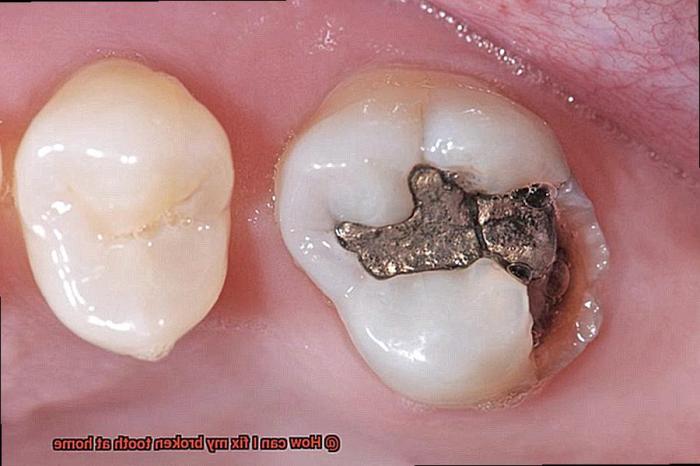How to get rid of black spots on teeth? This comprehensive guide explores the various causes, home remedies, and professional treatments available. Understanding the root causes, whether intrinsic or extrinsic, is crucial for effective solutions. From everyday dietary habits to specific dental procedures, we’ll delve into the science behind these unsightly spots and equip you with the knowledge to achieve a brighter, healthier smile.
This guide provides a detailed overview of the causes, ranging from dietary habits to medical conditions. It will explore the differences between intrinsic and extrinsic factors contributing to black spots, along with their respective treatments. We’ll cover a spectrum of home remedies and professional treatments, outlining their effectiveness and safety. The information is presented in a clear and accessible format, making it easy to understand and apply.
Causes of Black Spots on Teeth

Black spots on teeth, a common concern for many, can arise from various factors. Understanding these causes, whether intrinsic or extrinsic, is crucial for effective prevention and treatment. Identifying the source of the discoloration helps determine the most appropriate course of action to restore the teeth’s natural beauty and health.
Intrinsic Factors: Internal Stains
Intrinsic stains originate from within the tooth structure itself, often during tooth development. These stains are typically permanent and less responsive to surface treatments. They affect the inner layers of the tooth, impacting its color.
- Developmental Defects: These defects can occur during the formation of teeth, resulting in imperfections in the enamel or dentin. Examples include amelogenesis imperfecta, a condition where enamel is improperly formed, leading to opaque or discolored teeth. Hypocalcification, where insufficient minerals are deposited during tooth development, can also manifest as black spots.
- Dental Trauma: Injuries to the tooth, such as fractures or pulp exposure, can cause discoloration. The injury can lead to the infiltration of pigments into the tooth structure, resulting in black or dark spots. For instance, a chipped tooth can potentially reveal the darker dentin underneath.
- Dental Procedures: Certain dental procedures, like root canal therapy, can sometimes lead to discoloration. In some cases, the filling material itself may appear dark.
Extrinsic Factors: External Stains
Extrinsic stains, on the other hand, are acquired after tooth development and reside on the tooth’s surface. These are often preventable and treatable with proper oral hygiene.
- Food and Drinks: Many foods and drinks contain pigments that can stain the tooth enamel. Dark-colored beverages like coffee, tea, and cola are notorious for their staining potential. Also, some fruits and vegetables, such as berries and beets, can leave a visible mark on teeth.
- Tobacco Use: Smoking and chewing tobacco significantly increase the risk of extrinsic staining. The chemicals in tobacco products can permanently discolor teeth, resulting in a yellowish or brownish discoloration. The darker the tobacco product, the more intense the stain.
- Medications: Certain medications, including some antibiotics and tetracycline, can cause teeth to develop a dark discoloration during their development. This is a significant concern for children and adolescents who may be taking antibiotics at this stage.
Comparison of Staining Types
| Cause | Description | Examples |
|---|---|---|
| Intrinsic Factors | Stains originate from within the tooth structure, typically during tooth development. | Developmental defects, dental trauma, dental procedures |
| Extrinsic Factors | Stains are acquired after tooth development and reside on the tooth’s surface. | Food and drinks (coffee, tea, cola), tobacco use, medications |
Home Remedies for Removing Black Spots

Home remedies for black spots on teeth often involve natural ingredients and techniques. While these methods can offer potential benefits, they should not be considered a substitute for professional dental care. It’s crucial to remember that some home remedies may not be effective in removing the discoloration, and in some cases, they may even worsen the problem. Always consult a dentist for a proper diagnosis and treatment plan.Home remedies for black spots, while potentially helpful, should be approached with caution.
Many claim effectiveness, but scientific evidence for their efficacy is often limited. It’s important to use them in conjunction with good oral hygiene practices, and never replace professional dental advice.
Natural Ingredients for Home Remedies
Natural ingredients like baking soda, lemon juice, and hydrogen peroxide are sometimes used in home remedies. These ingredients can have varying degrees of effectiveness, and safety should always be a top priority.
Baking Soda Paste
Baking soda is a mild abrasive that can help remove surface stains. A paste made from baking soda and water can be gently applied to the affected areas.
- Procedure: Mix a small amount of baking soda with a little water to form a paste. Gently brush the paste onto the stained areas using a soft-bristled toothbrush. Rinse thoroughly after a few minutes.
- Safety Precautions: Avoid using baking soda paste excessively, as it can potentially erode tooth enamel if used improperly. Don’t use it on sensitive teeth or gums.
- Potential Side Effects: Overuse may lead to tooth sensitivity, gum irritation, or enamel erosion.
Lemon Juice
Lemon juice is known for its acidity, which some believe can help lighten stains. However, frequent use can damage tooth enamel.
- Procedure: Dip a soft-bristled toothbrush in lemon juice and gently brush the affected areas. Rinse thoroughly afterward.
- Safety Precautions: Avoid prolonged contact with lemon juice on your teeth. Rinse your mouth with water immediately after application. Do not use lemon juice on sensitive teeth or gums.
- Potential Side Effects: Tooth sensitivity, enamel erosion, and gum irritation are potential risks. Avoid applying directly to exposed tooth roots.
Hydrogen Peroxide
Hydrogen peroxide is sometimes used as a bleaching agent, but it can be damaging to tooth enamel.
- Procedure: Dilute hydrogen peroxide with water (typically a 3% solution). Apply a small amount to a soft-bristled toothbrush and gently brush the affected areas.
- Safety Precautions: Use a very low concentration of hydrogen peroxide. Do not swallow. Immediately rinse your mouth with water afterward. If you experience any discomfort, discontinue use.
- Potential Side Effects: Severe tooth sensitivity, gum irritation, and enamel erosion are potential risks. Do not use this method if you have exposed tooth roots.
Effectiveness Comparison Table, How to get rid of black spots on teeth
| Remedy | Ingredients | Procedure | Effectiveness Rating |
|---|---|---|---|
| Baking Soda Paste | Baking soda, water | Mix, gently brush | Mildly effective for surface stains |
| Lemon Juice | Lemon juice | Dip brush, gently brush | Potentially effective, but use cautiously due to acidity |
| Hydrogen Peroxide | Diluted hydrogen peroxide | Apply to brush, gently brush | Potentially effective, but carries higher risks |
Professional Treatments for Black Spots
Dealing with unsightly black spots on your teeth can be frustrating. Fortunately, professional dental treatments offer effective solutions to restore your smile’s brilliance and confidence. These interventions address the underlying cause of the discoloration and restore the tooth’s natural aesthetic.Professional dental treatments for black spots often target the source of the discoloration, whether it’s intrinsic staining (from within the tooth) or extrinsic staining (from surface deposits).
These treatments can range from simple procedures to more complex ones, each tailored to the specific needs of the patient. The best course of action is always determined by a qualified dentist, considering factors like the extent of staining, the cause, and the patient’s overall oral health.
Teeth Whitening
Teeth whitening procedures aim to lighten the color of the teeth by removing surface stains. This process often involves the use of bleaching agents, which can be applied at home or in the dental office. In-office treatments are generally more effective and faster, providing noticeable results in a single visit. Professional whitening often utilizes higher concentrations of whitening agents, leading to faster and more profound results.
The effectiveness of whitening depends on the cause of the staining; intrinsic staining might not be fully addressed by whitening alone.
Bonding
Dental bonding is a cosmetic procedure that involves applying a tooth-colored resin material to the affected area. The resin is sculpted and hardened to blend seamlessly with the surrounding teeth, effectively camouflaging minor imperfections or stains. Bonding is an excellent option for repairing small chips, cracks, or gaps, as well as addressing surface discoloration that is not amenable to whitening.
It’s a relatively quick procedure and can often be completed in a single visit.
Fillings
Dental fillings are a restorative procedure used to repair cavities or damaged areas of the tooth. While not a cosmetic treatment in the strictest sense, fillings can sometimes address discoloration that’s a result of decay or other structural damage. The filling material is carefully matched to the surrounding tooth’s color, minimizing the visual impact of the repair. Fillings are a necessary treatment for addressing cavities and tooth decay, which can lead to staining and discoloration.
Comparison of Procedures
| Procedure Type | Description | Cost | Suitability |
|---|---|---|---|
| Teeth Whitening | Lightens tooth color by removing surface stains. | Variable, depending on the procedure type (in-office vs. at-home) | Best for extrinsic staining, surface discoloration, and mild intrinsic staining. |
| Bonding | Applies tooth-colored resin to camouflage imperfections and stains. | Variable, depending on the extent of bonding | Excellent for minor chips, cracks, gaps, and surface discoloration not responding to whitening. |
| Fillings | Repairs cavities and damaged areas of the tooth, sometimes addressing discoloration. | Variable, depending on the size and complexity of the filling | Essential for addressing decay, cavities, and structural damage that result in discoloration. |
Last Word
In conclusion, addressing black spots on teeth requires a multifaceted approach. Understanding the underlying causes, exploring various home remedies, and consulting with a dental professional are key steps. While some remedies may provide temporary relief, professional treatments often offer more permanent solutions. By carefully considering the different options available, you can work towards achieving a beautiful and healthy smile free from unsightly spots.
Remember, a personalized approach, tailored to your specific situation, is crucial for optimal results.
Common Queries: How To Get Rid Of Black Spots On Teeth
What causes black spots on teeth that are not from food or drink?
Certain medical conditions, like certain medications or systemic issues, can lead to intrinsic staining, resulting in dark or black spots. It’s essential to consult a dentist to identify the underlying cause.
How long will it take to see results from teeth whitening treatments?
Results from teeth whitening vary depending on the severity of the staining and the chosen treatment. Some treatments show results immediately, while others might take a few sessions to achieve the desired outcome. A dentist can provide a more accurate estimate.
Are there any risks associated with using home remedies for black spots?
Some home remedies may have potential side effects, such as sensitivity or irritation. It’s crucial to use them cautiously and consult with a dentist before implementing any home remedy, especially if you have underlying dental or medical conditions.
Can fillings or bonding permanently remove black spots?
Fillings and bonding can effectively mask or remove black spots, offering a permanent solution in some cases. The suitability of these procedures depends on the severity and cause of the staining. A dentist can assess the best course of action.
 Nimila
Nimila



